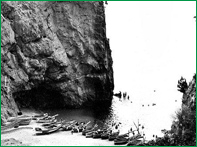The Residence "Il Giardino dei Limoni" is located a short distance from the center of Praiano, one of the most popular resorts of the Amalfi Coast; a charming town with typical Mediterranean building, characteristics paths, winding streets and stairways with steps.
A place dear to the devotion of the inhabitants of Praiano is the ancient church and the Abbey of St. Mary in Castro which stands on the highest part of the country, probably built over an ancient place of hermitage. The path leading to the monastery continues to reach one of the most beautiful Amalfi Coast path, known around the world by thousands of tourists: the path of the Gods. Starting from the town of Agerola along an old mule, which for centuries has been the means of communication and trade between the countries of the coast and the hinterland ones, you can reach Positano, enjoying breathtaking views close to the sea, surrounded by lush vegetation of the Mediterranean.
The Residence Il Giardino dei Limoni, thanks to its central location and access directly to the state S163, accessible from Salerno or Sorrento, is the ideal holiday destination to easily reach by car or bus, all the towns of Amalfi Coast, the Sorrento Peninsula and the Bay of Naples. The events connected with the religious tradition of these places and the local folklore will make your stay in Praiano. In addition, in the shops of the place you will find many local crafts (ceramics, finely hand-decorated with coral jewelry) or the gastronomic delights of the coast (pickled anchovies, anchovy of Cetara, hanging cherry tomatoes, sun-dried tomatoes , pepaccelle that is sweet and sour peppers stuffed with tuna, capers and olives, olive oil, wine DOP Amalfi Coast, lemon liqueur, prickly pear, myrtle, citrus marmalades and jams and sweets: delicious lemon puffs Santa Rosa taking its name from the nearby convent of Conca dei Marini where they were created).
In the Middle Ages the village was a thriving village belonging to the rich Duchy of Amalfi, Ancient Maritime Republic and even then, its territory was divided into two parts: the hamlet of Praiano in the upper area of the coast, where the population was addicted mainly to agriculture and livestock, and the house of Vettica Maggiore in the lower part of the village that slopes down to the sea, of which there were fishermen houses , deposits and moorings for boats. The etymology of the name Praiano is of Latin origin, Pelagianum (open sea), and the discovery of Roman villas along the coast (Positano, Minori), testify to the presence of the Romans before the 79 A. C. , the year of eruption of Vesuvio that buried Pompeii, Herculaneum and other towns of the Gulf of Naples.
 In 1278 Charles I of Anjou, imposed build towers to defend the coast from pirates, including the beautiful Assiola Tower, called the "Sciola."
Among the most ancient activities of the place, as well as seafood, but related to the industriousness of women, until the '700, there was one of the linen industry, anchovies in brine, palms for the Sunday before Easter, the retinas to contain Tuppi, hairstyles typical of women of Praiano.
In 1278 Charles I of Anjou, imposed build towers to defend the coast from pirates, including the beautiful Assiola Tower, called the "Sciola."
Among the most ancient activities of the place, as well as seafood, but related to the industriousness of women, until the '700, there was one of the linen industry, anchovies in brine, palms for the Sunday before Easter, the retinas to contain Tuppi, hairstyles typical of women of Praiano.